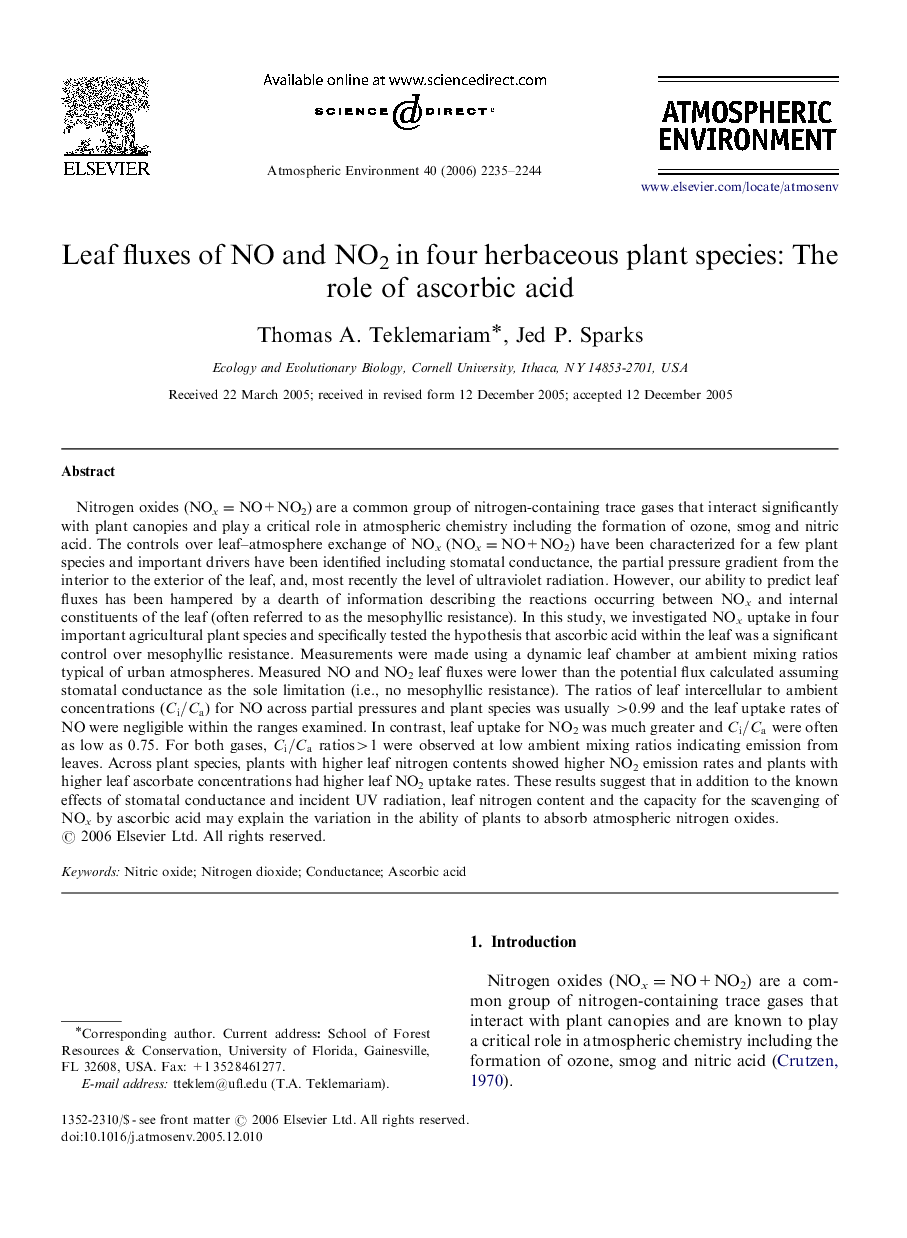| Article ID | Journal | Published Year | Pages | File Type |
|---|---|---|---|---|
| 4445069 | Atmospheric Environment | 2006 | 10 Pages |
Nitrogen oxides (NOx=NO+NO2) are a common group of nitrogen-containing trace gases that interact significantly with plant canopies and play a critical role in atmospheric chemistry including the formation of ozone, smog and nitric acid. The controls over leaf–atmosphere exchange of NOx (NOx=NO+NO2) have been characterized for a few plant species and important drivers have been identified including stomatal conductance, the partial pressure gradient from the interior to the exterior of the leaf, and, most recently the level of ultraviolet radiation. However, our ability to predict leaf fluxes has been hampered by a dearth of information describing the reactions occurring between NOx and internal constituents of the leaf (often referred to as the mesophyllic resistance). In this study, we investigated NOx uptake in four important agricultural plant species and specifically tested the hypothesis that ascorbic acid within the leaf was a significant control over mesophyllic resistance. Measurements were made using a dynamic leaf chamber at ambient mixing ratios typical of urban atmospheres. Measured NO and NO2 leaf fluxes were lower than the potential flux calculated assuming stomatal conductance as the sole limitation (i.e., no mesophyllic resistance). The ratios of leaf intercellular to ambient concentrations (Ci/Ca)(Ci/Ca) for NO across partial pressures and plant species was usually >0.99 and the leaf uptake rates of NO were negligible within the ranges examined. In contrast, leaf uptake for NO2 was much greater and Ci/CaCi/Ca were often as low as 0.75. For both gases, Ci/CaCi/Ca ratios>1 were observed at low ambient mixing ratios indicating emission from leaves. Across plant species, plants with higher leaf nitrogen contents showed higher NO2 emission rates and plants with higher leaf ascorbate concentrations had higher leaf NO2 uptake rates. These results suggest that in addition to the known effects of stomatal conductance and incident UV radiation, leaf nitrogen content and the capacity for the scavenging of NOx by ascorbic acid may explain the variation in the ability of plants to absorb atmospheric nitrogen oxides.
